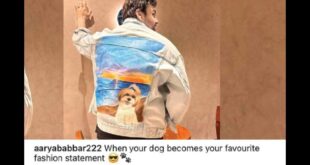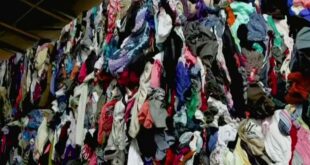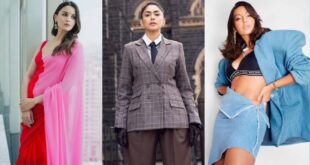The Pont Neuf: From Historic Bridge to Fashion Spectacle
The Pont Neuf, built in the 16th century, holds the title of being Paris’s oldest bridge. This summer, however, it underwent a transformation when it was claimed by the renowned brand Louis Vuitton. The brand adorned the bridge’s surface with a golden version of its signature checkerboard Damier motif and used boats to transport some of the world’s most notable figures – LeBron James, Rihanna, Leonardo DiCaprio, and Beyoncé – to the front row. As a gospel choir filled the air with a rousing benediction, models, including former Zegna designer Stefano Pilati and rapper Pusha T, walked down the runway, basking in the warm mauve glow of a perfect Parisian sunset. The show concluded with a surprise performance by Jay-Z. It was at this extravagant event that Louis Vuitton officially announced Pharrell Williams as its newest men’s creative director, a position he was appointed to in February.
When news broke of Pharrell’s appointment, the fashion press engaged in plenty of scrutiny and contemplation. However, in many ways, his selection represents the evolution of a narrative that began over a century ago. Designers such as Chanel, Saint Laurent, Lagerfeld, Armani, and Tom Ford all became celebrities in their own rights. Ralph Lauren, much like Pharrell, was not a conventional fashion designer, but he expanded his mega-brand through his visionary world-building and impeccable taste – both qualities shared by Louis Vuitton’s new creative force. Is there really a problem with altering the narrative and starting with a global celebrity such as Pharrell, particularly given his impressive credentials?
It’s important to consider the current moment, in which determining where the entertainment world ends and the fashion world begins has become increasingly challenging. NBA players have turned their locker-room walks into personal runway shows, the marketing team behind Barbie successfully captivated audiences by embracing the color pink, as demonstrated by Ryan Gosling wearing a sharp, blush-colored Gucci suit at a premiere. Even The New York Times ran style recaps of HBO’s Succession during its final season. Meanwhile, fashion brands have been flocking to Los Angeles, signaling their readiness to be in the limelight. Gucci showcased its collection on Hollywood Boulevard, Versace in West Hollywood, Fear of God at the Hollywood Bowl, Ralph Lauren near Pasadena, and Chanel on the Paramount lot – all within the past two years.
Pharrell’s appointment can thus be seen as the culmination of the complex relationship between fashion and entertainment. “LVMH has bigger aspirations than just consumer goods,” says Robert Burke, founder of Robert Burke Associates, a luxury-retail consultancy firm. “They touch the high-end consumer’s life at all angles, whether it be fashion, jewelry, accessories, beverages, even hotels.” By referring to itself as a “cultural maison” in recent years, Louis Vuitton echoes this sentiment. In this context, what they require from Pharrell extends beyond a traditional creative director role – they need a brand avatar, someone who is part designer, part artist, part influencer, part spokesperson, and part event organizer.
“A brand the size of Louis Vuitton has technical design already covered on their staff,” notes Burke. Pharrell’s role, he says, “is more about seeing the bigger picture and setting the tone for the product and direction.” This arrangement benefits both parties: “LV gets their big-name celebrity designer who can keep the brand exciting and fresh, while he also brings a wide network of top global celebrities, entertainers, and athletes who will support him. Pharrell is able to tap into LV’s resources and infrastructure to make his creations and ideas come to life.” Hence, the man who stole the show at the Grammys simply by wearing a Vivienne Westwood mountain hat is now tasked with creating similar moments for Louis Vuitton.
However, this partnership comes with its own set of risks. Firstly, all of Pharrell’s part-roles within Louis Vuitton are part-time: LV CEO Pietro Beccari recently confirmed that Williams is only required to devote one-third of his working hours to the brand, a surprising revelation. Furthermore, much of Pharrell’s sartorial magic stems from his idiosyncratic tastes – his ability to effortlessly combine luxury and mass market, streetwear and formalwear, and his knack for unexpected accessories. Will his dynamism (contractually or otherwise) be compromised now that he is tied to Louis Vuitton? Additionally, while Pharrell has an impeccable track record as a collaborator, brand partner, artist, and entrepreneur, high-profile celebrity collaborations always carry the risk of scandals or the loss of a fan base.
Ultimately, the discussion surrounding Louis Vuitton and Pharrell is not about the two entities themselves, but rather what will follow for everyone else. Celebrity culture thrives on hype, and this machine must constantly be fueled. It is easy to visualize the effects of the fashion industry suddenly being forced to chase Q scores across various platforms in search of the next symbiotic publicity bonanza. Thus, even the role of a designer at the most prestigious fashion houses may not differ much from that of a celebrity chef with a line of cookware at a high-end retailer. Additionally, the overpowering nature of celebrity is evident in the fact that this essay has spent nearly 1,000 words discussing Pharrell’s debut menswear collection for Louis Vuitton without adequately describing the clothes themselves – a solid mix of boxy streetwear and sleek tailoring featuring digitized camouflage prints. The industry must find ways to capture consumer attention in an increasingly distracting landscape, to stop them mid-scroll, so to speak.
Nevertheless, there is an air of excitement surrounding this partnership. Although Pharrell’s first Louis Vuitton show took place at sunset, it marked the beginning of a new era for the brand.
Max Berlinger is a freelance writer based in Brooklyn. He covers fashion, culture, and lifestyles for a variety of publications including The New York Times, Bloomberg, and the Los Angeles Times.
 Mind Uncharted Explore. Discover. Learn.
Mind Uncharted Explore. Discover. Learn.




